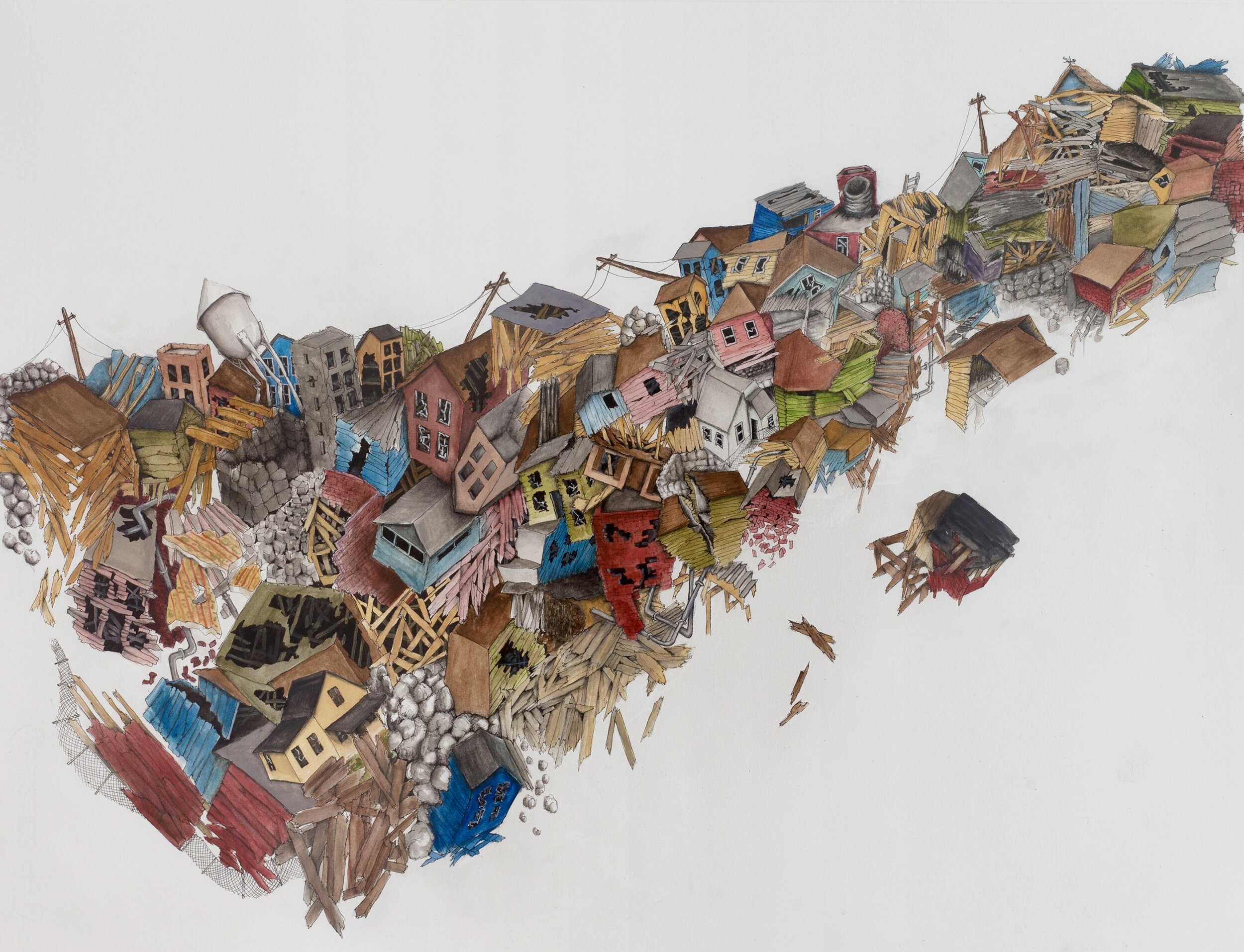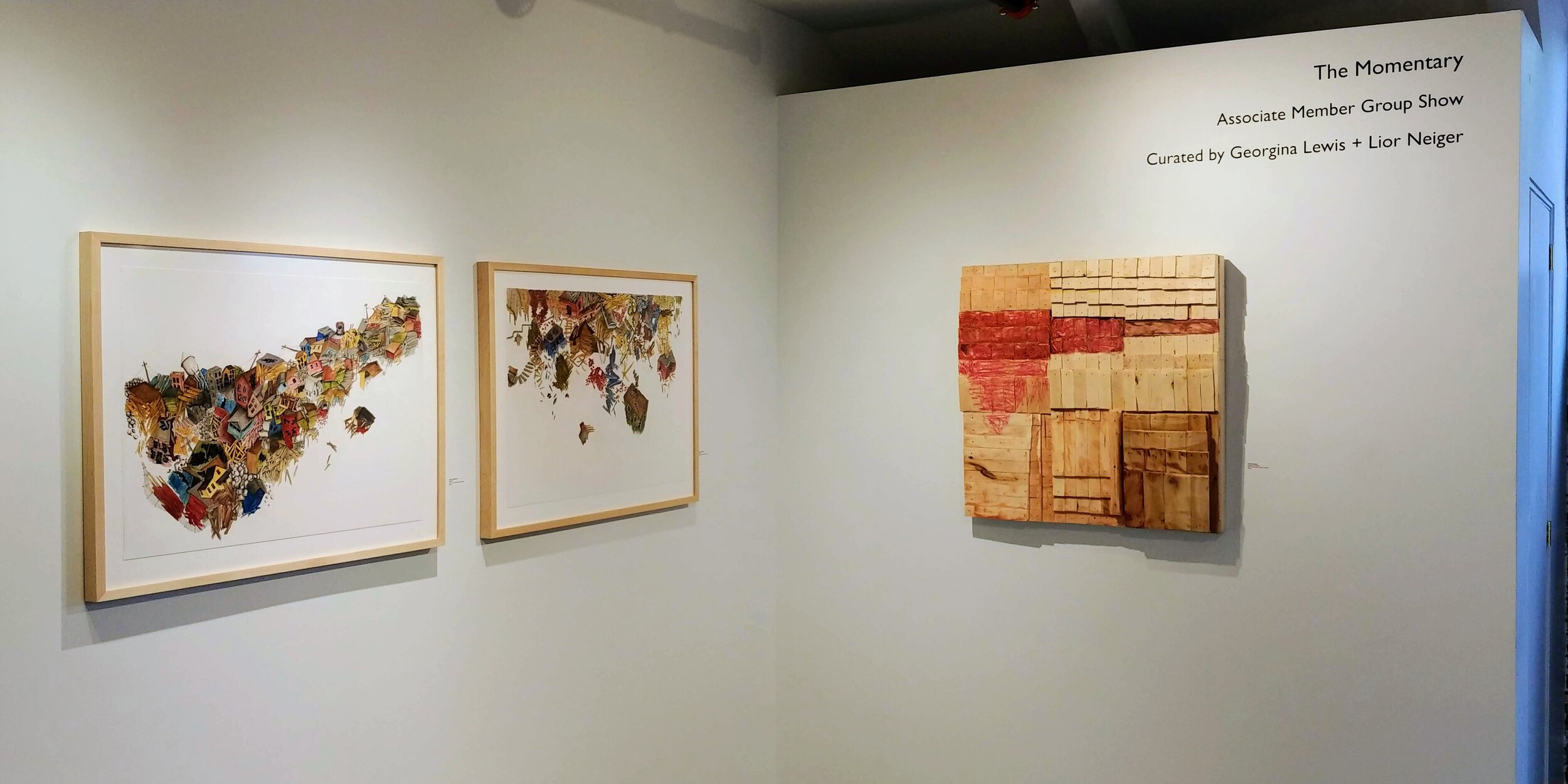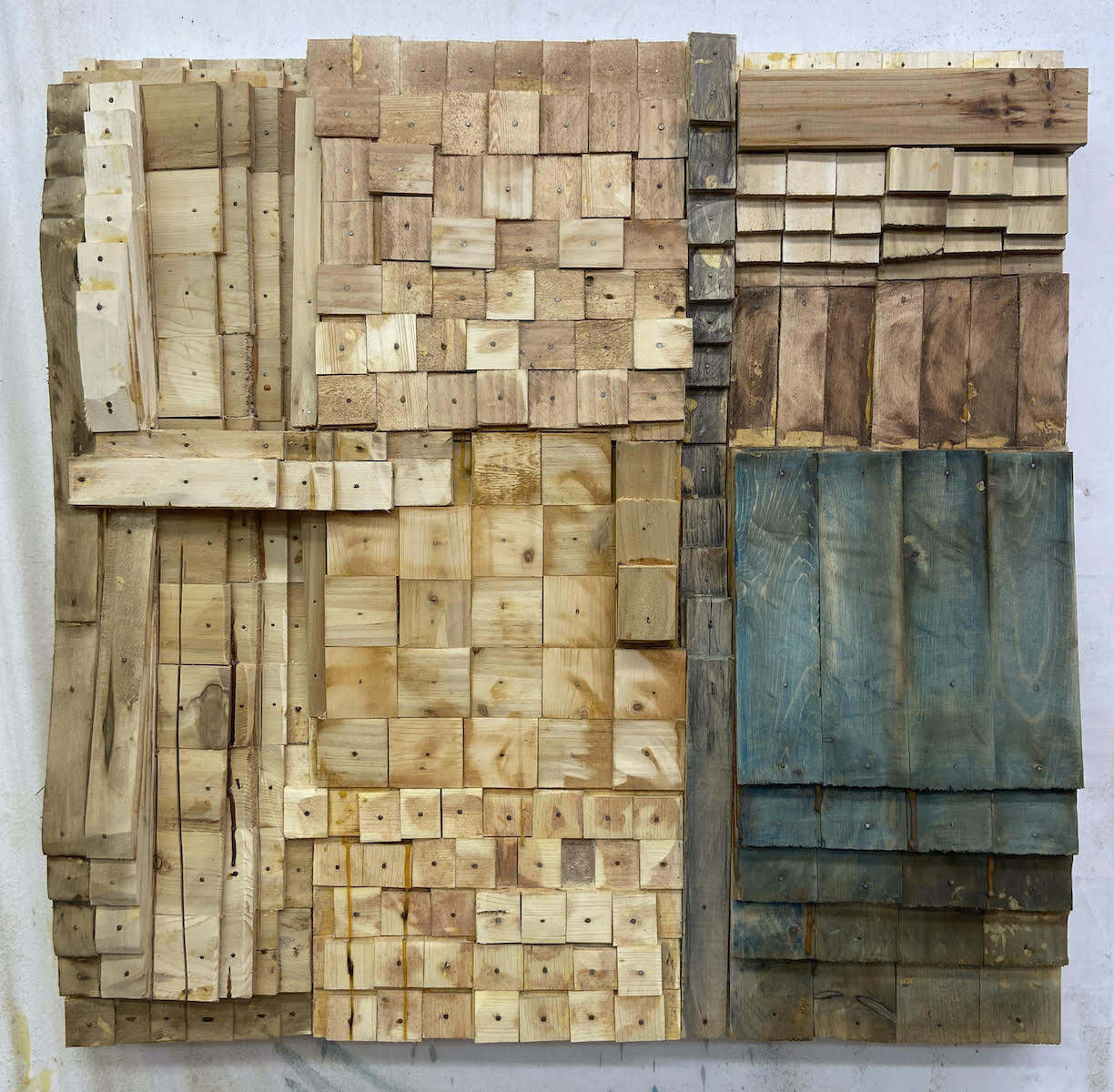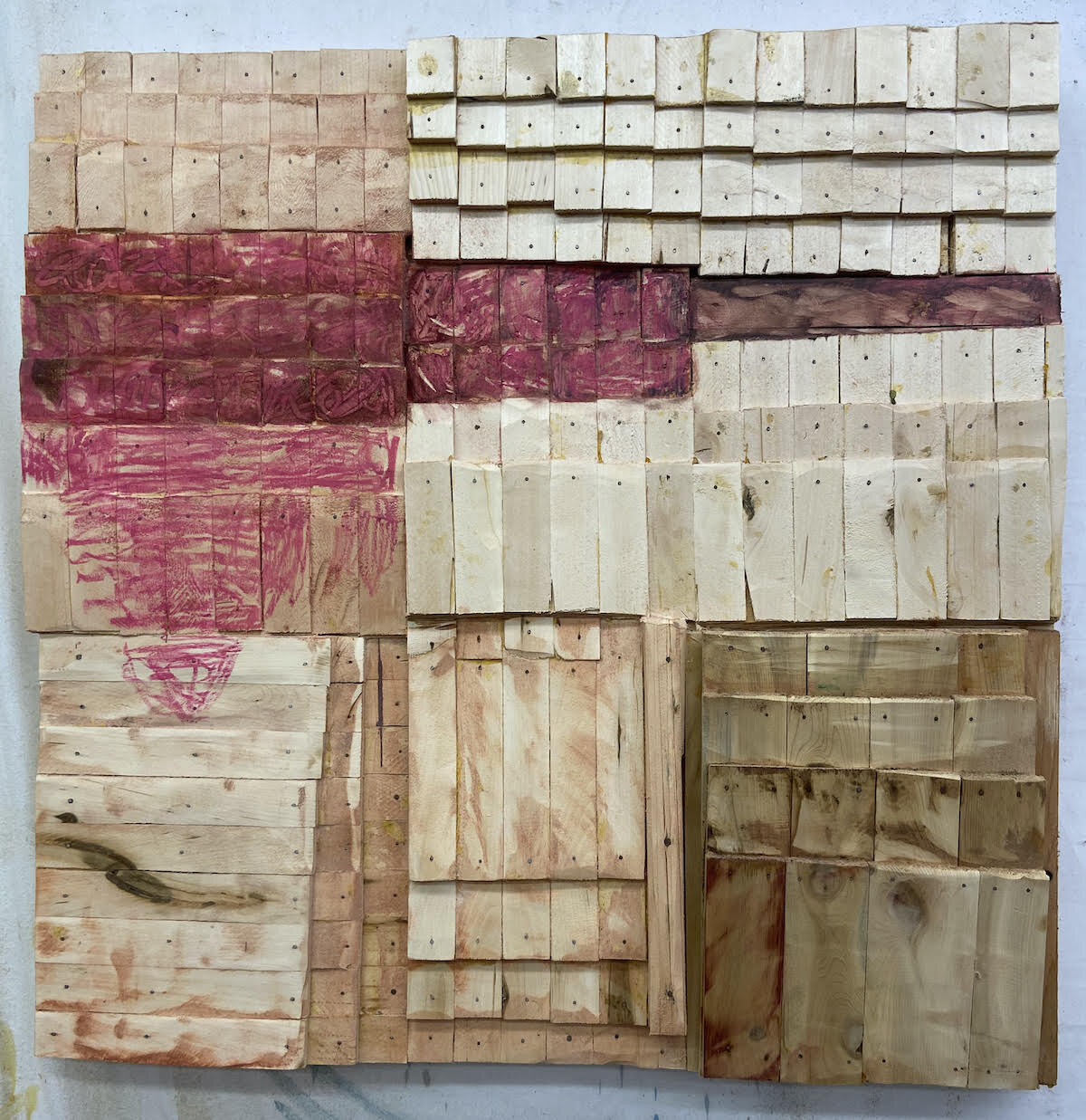The Momentary: The Theme of Home
THE MOMENTARY
Associate Member Exhibition
curated by Georgina Lewis + Lior Neiger
August 4–29, 2021
"The Momentary" has taken over our main gallery and features the work of Fountain Street’s Associate Artists. It is a show that illuminates time as a marker, both absolute and arbitrary. Below co-curator Lior Neiger explores the theme of home in the work on view.
Everything has a place and time, as the saying goes. The main theme in “The Momentary” concerns time, but it also encapsulates the question of where. The COVID-19 pandemic that begun spreading around the world in early 2020 forced many to be confined to one specific place, usually their home, causing different emotions and reactions. Thus, the main locus that is weaved throughout the show is “home,” as a place of security and calm or of insecurity and stress.
Susan Greer Emmerson’s works “Hiraeth” 5 and 6 are a poignant example of this theme. Susan explains that “hiraeth” is a Welsh word that means a profound homesickness for a home you can’t return to, or that may have never existed. In her statement, she writes: “This past year has, for most of us, profoundly changed our relationship with physical space, especially the formerly safe space of home. Homes for some have become unbearably confining, for some uncertain or nonexistent and for others a desolate empty place to grieve”. While her works in the show may invoke scenes from after a storm, we cannot escape many other fears - we are confronted with an apocalyptic pile of what is supposed to protect you: the emotional wreckage many experienced of being confined to their homes is also evident in her work.
It is not by accident that Leslie Zelamsky’s work “Dwelling Revisited 5,” neighbors Susan’s work on the gallery wall.
"Dwelling" as Leslie remarks in her statement, addresses multiple definitions; from thinking of something for a long time to home or residence. During the pandemic, people were reintroduced to the term shelter-in-place, that brought to mind connotations from other catastrophes (from active shooter to cold war fears of nuclear fallout). The anxiety induced by the lockdown produces varying results; While Susan’s work points toward destruction, Leslie’s work points toward construction, but one that is obsessive. Incorporating material that is commonly used as a building material, Leslie constructs a dwelling that aims to organize but risks falling into an unhealthy repetition. In Leslie’s words: “Think, repeat, think repeat, think repeat. The Dwelling Revisited series is the product of repetitive physical and visual processes. Cut, hammer, glue, nail, paint, and sand. Again, again and again. Over and over again, I dwell on the work.” While her work is visually organized in a 30” by 30” square, one cannot escape the thought of whether this is her way of making sense of the bits and pieces of the shattered world we live in.
Some artists choose to look at the outdoors (e.g., Nan Hass Feldman, Anne Sargent Walker, John Daly) in search of subject matters that bring them a sense of freedom and peace, but Megan Mirasolo’s work, “The Glitch” does it in a twisted way.
Meghan Mirasolo, The Glitch, Archival Digital Print
As an artist that relies heavily on travel photography, being confined to her home, Meghan found it almost impossible to create. But Megan discovered a way out, as she explains in her statement: “In order to soothe my wanderlust, I spent hours lost in Google Maps, exploring new destinations through Street View. When I came across something interesting, I'd take a photograph of my computer screen. At the very least, I was able to capture a glimpse of somewhere new, at some undefined point in time.” Her photo reconstruction of the “new destination,” portrays a place that looks as if it is about to collapse.
The word "glitch" is of Yiddish origin and means slide, glide, or slip. The word seeped into American English in the 1940s from radio broadcasters who used it to describe an on-air mistake, and later made its way into television and even the space program.
Today, computer glitches are familiar, but when reality glitches, as artists, even when we struggle, we find a way to turn it into meaningful art.






